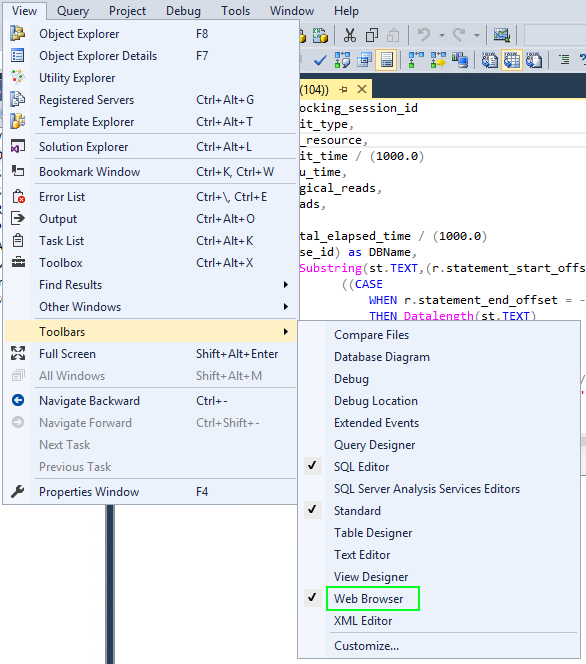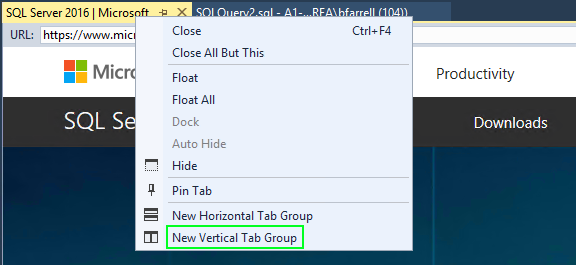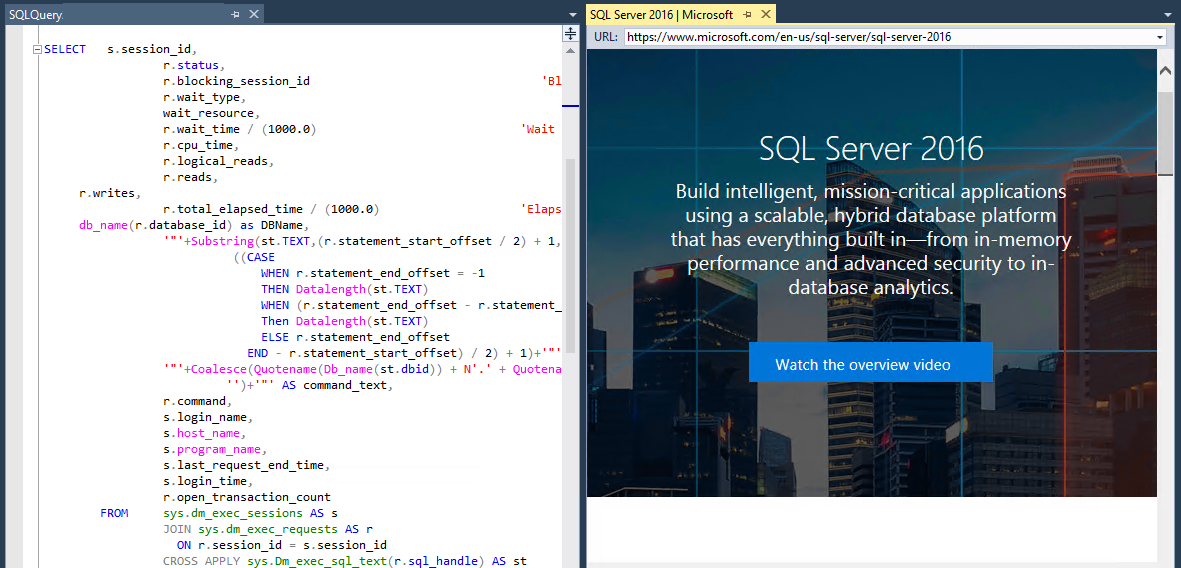SQL Server Management Studio hosts a version of A Web Browser. This allows you to have a Query Editor opened plus a Web Browser - at the same time - on the same screen. You can access the Web browser by pressing CTRL+ALT+R or by using the SSMS Toolbar.
Toolbar:
To enable the Web Browser toolbar, go to View, then Toolbars and click Web Browser. This will activate the Toolbar and allow actions such as Stop, Back, etc.

Now, you can access the Web Browser controls on the Toolbar:

New Vertical Tab Group:
Creating a new Vertical Tab Group will allow a side-by-side view of the Query Editor and the Web Browser. Very convenient for the times you do not want to leave the SQL Server Management Studio Application.


That's it!
If you want more SQL Server Management Studio tips check out the Tag Name "SQLServerManagementStudio".
Update:
I am also including the T-SQL script in the image that a few people have asked for. It identifies active requests occurring in SQL Server:
SELECT s.session_id,
r.status,
r.blocking_session_id 'Blk by',
r.wait_type,
wait_resource,
r.wait_time / (1000.0) 'Wait Sec',
r.cpu_time,
r.logical_reads,
r.reads,
r.writes,
r.total_elapsed_time / (1000.0) 'Elaps Sec',
db_name(r.database_id) as DBName,
'"'+Substring(st.TEXT,(r.statement_start_offset / 2) + 1,
((CASE
WHEN r.statement_end_offset = -1
THEN Datalength(st.TEXT)
WHEN (r.statement_end_offset - r.statement_start_offset) < 0
Then Datalength(st.TEXT)
ELSE r.statement_end_offset
END - r.statement_start_offset) / 2) + 1)+'"' AS statement_text,
'"'+Coalesce(Quotename(Db_name(st.dbid)) + N'.' + Quotename(Object_schema_name(st.objectid,st.dbid)) + N'.' + Quotename(Object_name(st.objectid,st.dbid)),
'')+'"' AS command_text,
r.command,
s.login_name,
s.host_name,
s.program_name,
s.last_request_end_time,
s.login_time,
r.open_transaction_count
FROM sys.dm_exec_sessions AS s
JOIN sys.dm_exec_requests AS r
ON r.session_id = s.session_id
CROSS APPLY sys.Dm_exec_sql_text(r.sql_handle) AS st
WHERE r.session_id != @@SPID
ORDER BY r.cpu_time desc, r.status,
r.blocking_session_id,
s.session_id
|
|
|
|
|
|